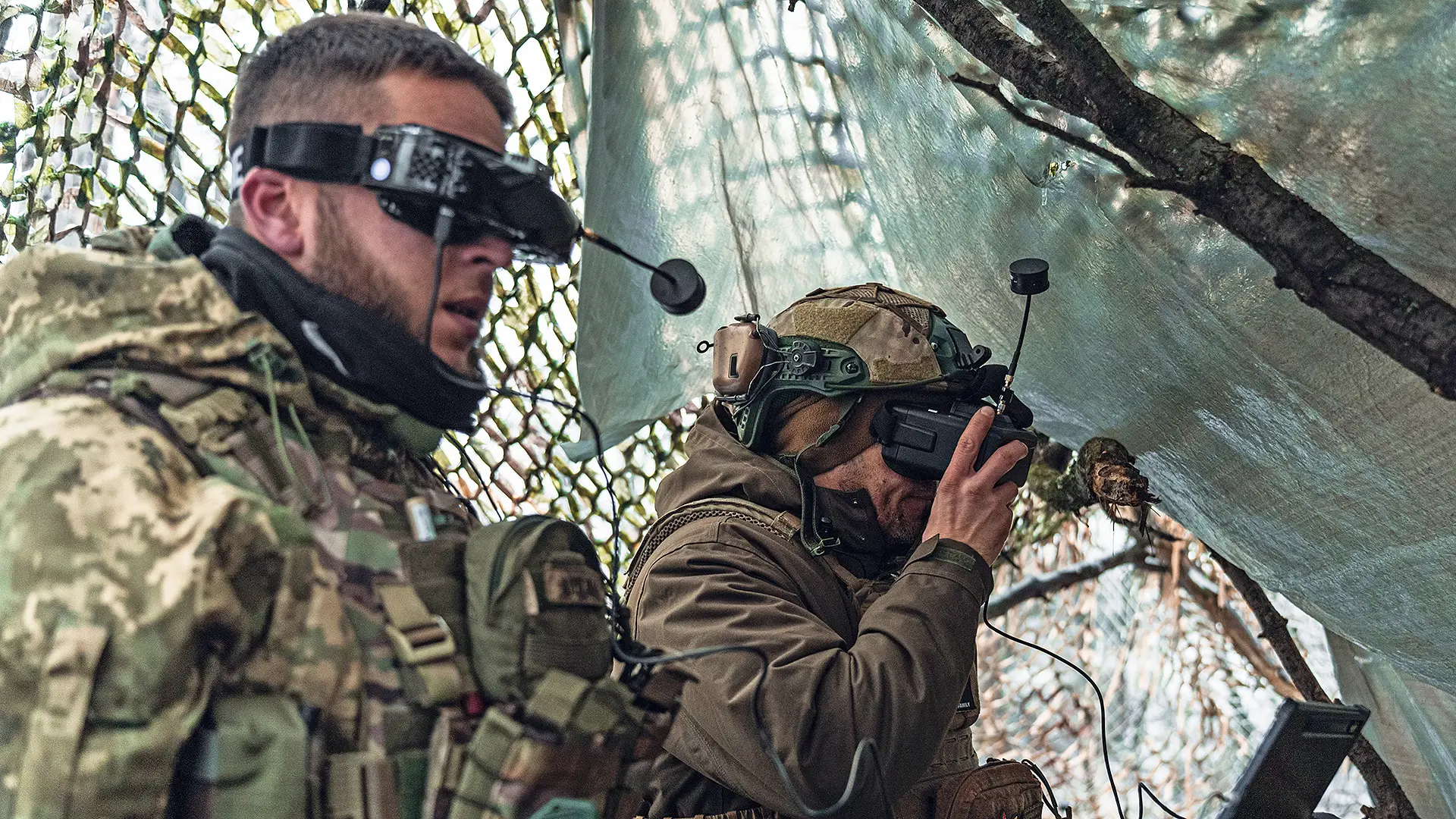
Like a century ago, war remains a fertile ground for significant weapon development. The resistance of Ukraine to the Russian occupation is no exception. Drones, both tactical and operational, for reconnaissance and strikes, have become symbols of this conflict. FPV drones, in particular, hold a special place in this list, managing to replace artillery, which is in short supply for both sides.
Cheap kamikaze drones with attached munitions have demonstrated their high potential and quickly taken their place alongside other types of weaponry. However, time does not stand still, and the development of FPV (First Person View) has not halted at mere exchanges of strikes. Almost immediately, both sides began seeking solutions to protect against this new threat. Initially, these were primitive grids and grilles on vehicles, but very soon, everything evolved into a series of technologically sophisticated, comprehensive systems and tactics.
In races of abstract ‘sword and shield,’ the advantage still remains with the means of defeat, namely the drone. However, the protective equipment during this time took a big step forward. And the main arguments in this confrontation now include electronic reconnaissance and countermeasures.
In January 2024, the commander of the Birds of Magyar Battalion, known by the call sign ‘Magyar,’ announced in one of his videos the statistics of intercepts of Russian FPV drones in the Kherson region.
The unit, stationed in a 30-kilometer section of the front along the Dnipro River near village Krynky, holds the direction that is most attacked by strike UAVs.
According to Magyar, in 111 days, Ukrainian Marines and Territorial Defense Forces, together with his battalion soldiers, discovered more than 2,000 enemy drones, of which 1,538 were destroyed.

Drones are destroyed due to the coordinated operation of signals intelligence and EW teams, which detect the appearance of a radio signal from the UAV. They determine the operational frequency, after which they suppress communication by EW systems.
The so-called ‘suppression’ occurs through the generation of ‘white noise’ at the frequency of reception of signals by a drone. This ‘noise’ interferes with the signals, causing the drone to lose contact with the operator and cease to pose a threat.
Frequency direction finding and operation of EW systems in a narrow band are necessary to avoid interfering with the operation of own drones on neighboring frequencies. Moreover, the smaller the operating range, the greater the power and radius of ‘noise’ for the jamming station.
It should also be noted that recently, an additional microchip (SAW filter) has started to appear on Russian drones, blocking the reception of radio frequencies beyond a certain narrow range. This helps protect communication from the impact of EW systems that use interference across a wide range of radio frequencies.
In fact, to ‘suppress’ such drones, it is necessary to interfere with the exact frequency, which is still not common on the battlefield. Therefore, the direction finding and suppression of drones at narrow frequencies are already transitioning from an option to a vital need.
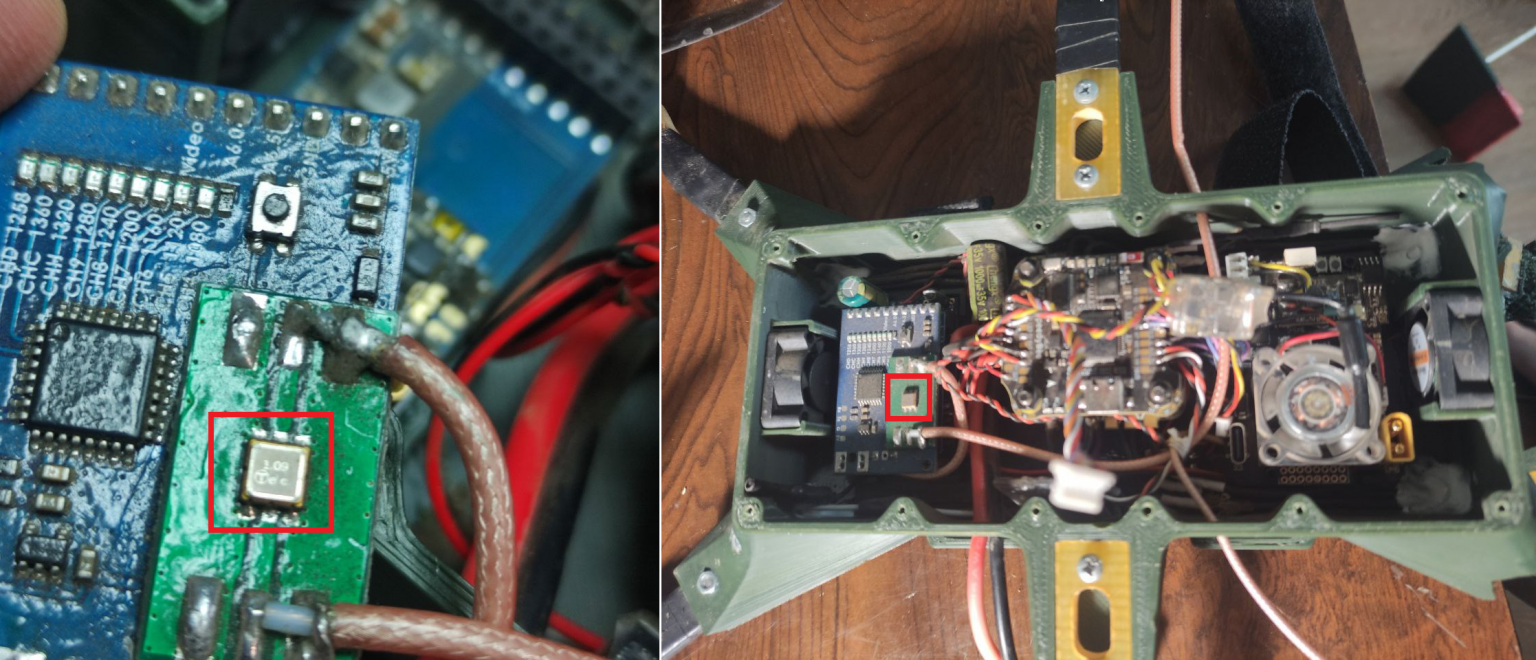
Direction finding of the exact frequencies used by FPV drones also opens up opportunities for intercepting their signals, as they use unencrypted analog communication. This means that anyone with a remote control near the drone, who knows the necessary frequency, can get images from its camera and even hijack control.
Such tactics have been used for some time by experienced units of both the Ukrainian Defense Forces and the invaders. Signals intelligence stations and operators with control panels are set up to intercept the signal along the front line.
The video below shows the process of deploying one of these posts by the Russians, namely the set up of antennas for the UAV control panel.
After detecting the drone, the information is transmitted to a control post with the remote control, where an operator connects to it. Next, they attempt to geolocate the received video feed from the drone to understand the drone’s direction of movement, warn of potential targets, and detect the position of the enemy operator controlling the drone.
Control interception of the drone is also possible, under certain conditions. If successful, the drone is usually brought straight to the ground to neutralize the threat.
Footage of several such episodes was published by Magyar on his social media account. The video shows an intercepted video signal from the drone of the Russian group of UAV operators ‘Judgment Day’ near Krynki village.
The results of Ukrainian strike drone units in Kherson, including the ‘Birds of Magyar’ Strike UAV Battalion, are undoubtedly impressive but not representative. Their achievements are primarily attributed to the high organizational qualities and initiative of the fighters, rather than the systemic development of the Strike UAV Companies’ structure.
The mentioned countermeasures fundamentally rely on a high level of coordination among units of signals intelligence, electronic warfare, Strike UAV squads, etc. This level is not universally achievable, and therefore, it often occurs that drones are suppressed by one’s own EW systems, resulting in communication loss due to the simultaneous operation of many drones on the same frequency.
The problem of interaction and coordination of actions could be addressed by the creation of an automated command and control system (C4I system) that integrates units of EW, SIGINT, and Strike UAV Companies into a unified network. However, it is currently lacking, and there is no information about its development or testing.
Weak institutional development is also evident in the absence of a systematic process for collecting battlefield experience, processing it, and transferring it to training centers that prepare new soldiers for strike drone companies.
Currently, state training centers are preparing recruits at an insufficient level, lacking instruction in modern tactics for the use of strike drones. Additionally, the current structure of Strike UAV Companies includes, besides pilots, several other specialists who receive no training at all in these centers. The situation with private training centers is somewhat better.
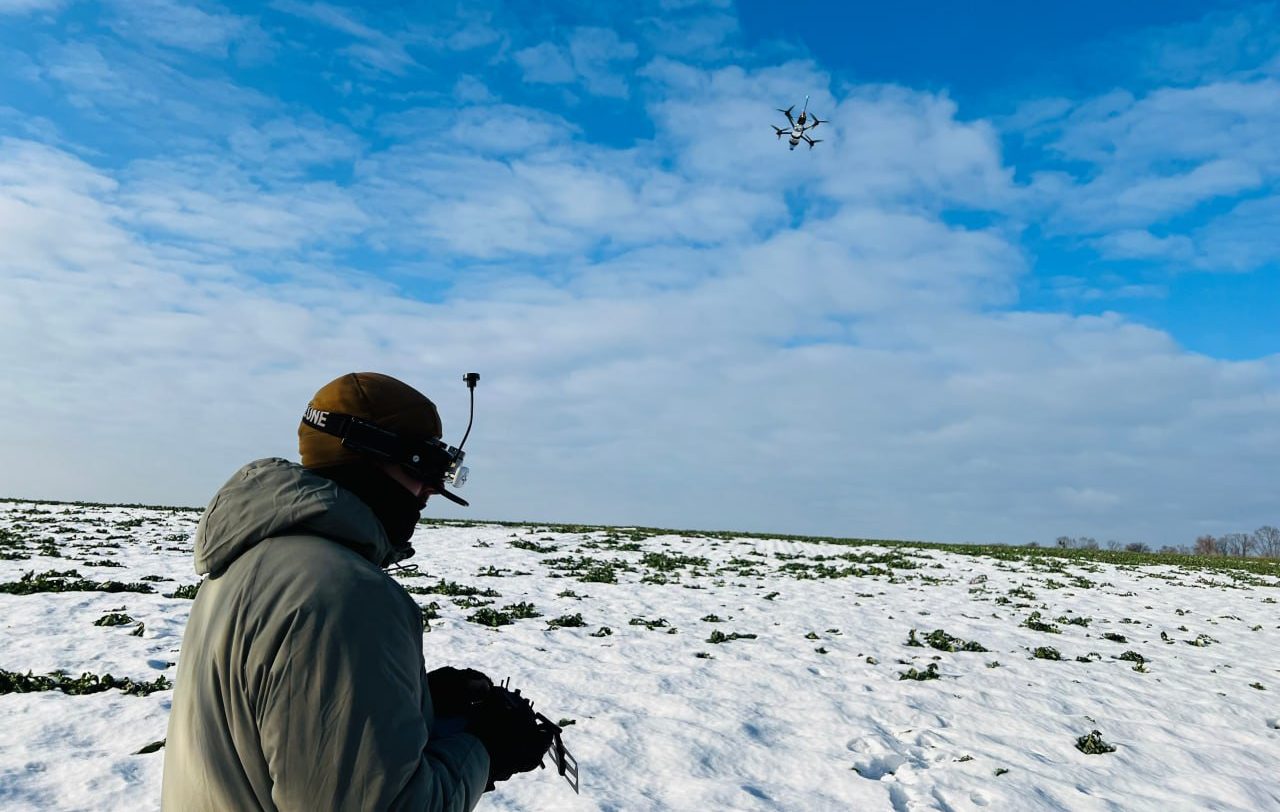
Equally significant is the problem of the outdated structure of Strike UAV Companies, which no longer meets modern requirements and hinders the full realization of the units’ potential. However, due to security restrictions, public discussion of this matter is impossible.
The Ukrainian development of FPV drones is advancing rapidly, but it still lags a step behind the invaders, leading to occasional fatal consequences.
Currently, Ukraine, specifically its private enterprises, is just catching up with Russian engineers in the production of ‘night’ drones equipped with thermal imaging cameras, enabling operations in the dark.
However, a major challenge persists in the radio-electronic component, affecting both drones and ‘trench EW.’ The majority of Ukrainian drones still operate within the standard communication range of 850-930 MHz, a frequency range targeted for suppression by all enemy EW stations. Simultaneously, virtually all Ukrainian personal EW devices used by soldiers for protection against FPV operate on the same frequencies.
At the same time, Russian kamikaze drones have long been produced with communication modules with alternative reception and transmission frequencies in the range of 720-950 MHz or 950-1100 MHz. This design renders them invulnerable to most Ukrainian ‘trench’ EW systems operating at those frequencies.
This situation is further fueled by the AD Counter FPV system, which operates exclusively in the same radio frequency band 850-940 MHz. The system was introduced by the Minister of Digital Transformation, Mykhailo Fedorov, in 2024 (!).
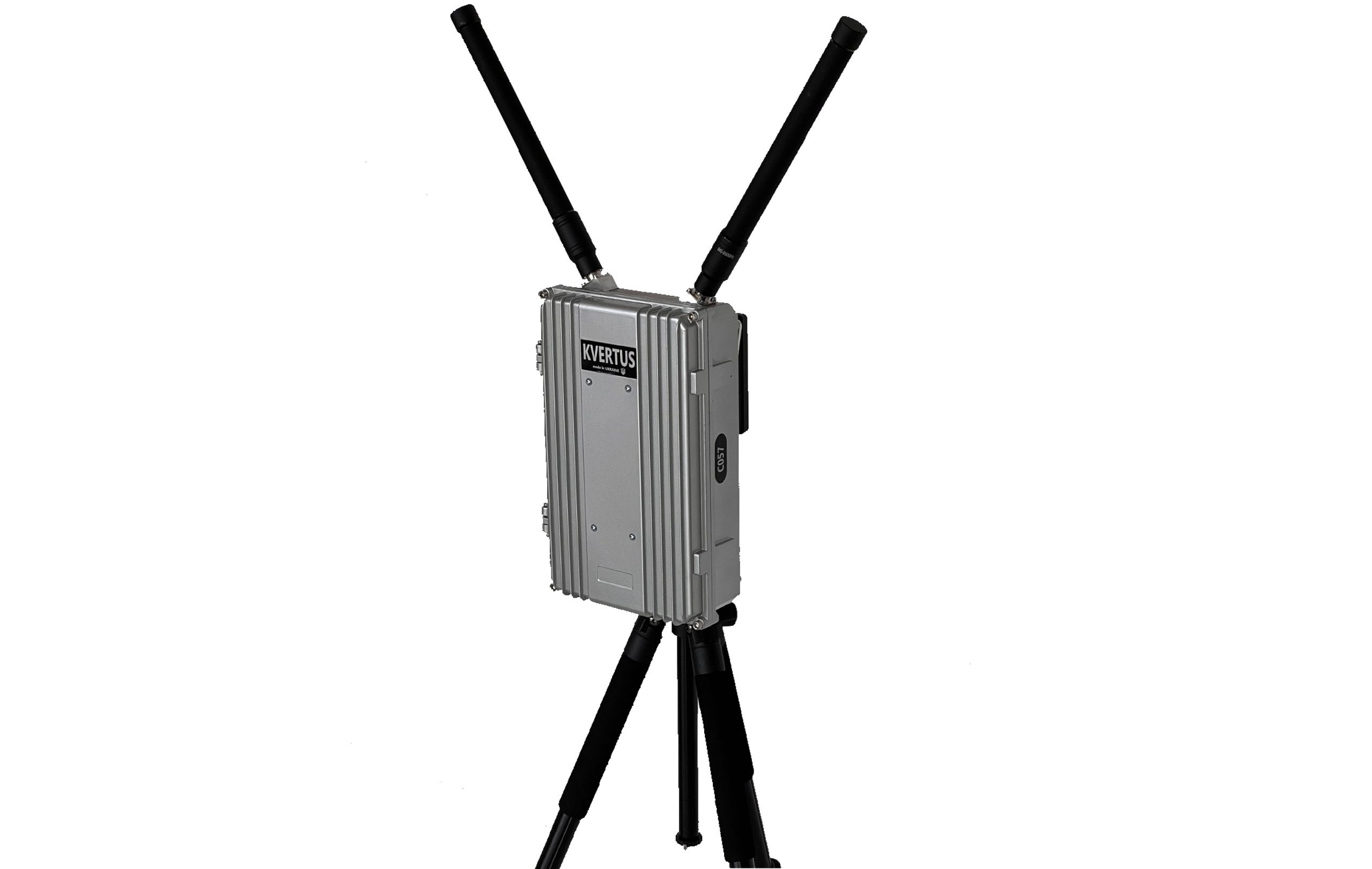
The creation of broadband chaff systems with a wider frequency range is possible, albeit at a higher cost. The invaders have been producing EW stations capable of operating in several ranges for a long time in parallel with new drones. For example, the Russian Gribochek-4N EW system is able to operate in 4 modes: 720-950MHz/ 950-1100MHz/ 1100-1400MHz/ 2280-2540MHz.
Another issue is the low prevalence of even outdated systems in Ukrainian armored vehicles and infantry units. These systems are mostly bought by soldiers themselves or volunteers rather than the Ministry of Defense.
The use of improvised explosive devices (IEDs) for attack drones remains the Achilles’ heel of Ukrainian strike drones. This poses a threat to crews and has already resulted in severe injuries and deaths on several occasions.
Due to the use of poor-quality IED fuze, it is not uncommon for a hit to fail, which significantly affects the effectiveness of UAV engagement. According to some reports, every tenth failed flight of an FPV drone is associated with the failure of the warhead.
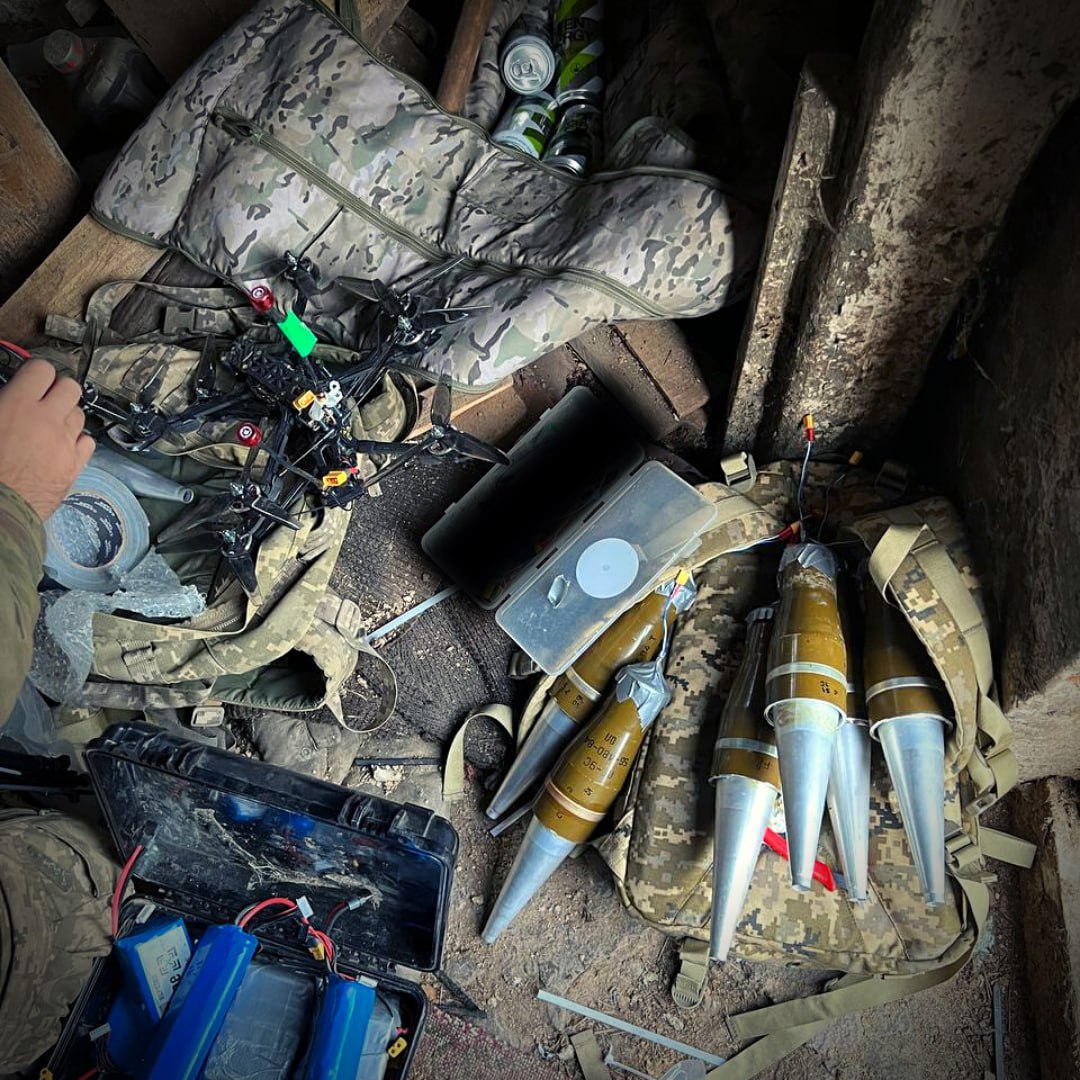
It is known that the Ukrainian defense industry, in collaboration with the government and the Ministry of Defense, is already working to address this issue and is developing the necessary solutions. Specifically, the latest government contracts include the delivery of reliable fuzes along with the drone.
It is also worth mentioning that donors, including the Come Back Alive Foundation, were among the first to purchase a certain volume of specialized ammunition manufactured at the facilities of the Ukrainian defense industry.

Meanwhile, since the middle of 2023, Russia has been mass-producing a whole series of special ammunition for drones, including the OFSP-2.5-A133 HE-Frag projectile, at state-owned enterprises in the defense industry.
It should be noted that this critiquing article is aimed at highlighting the overdue organizational and technical problems in the Armed Forces of Ukraine in order to make units stronger and more effective on the battlefield.
All the described tactics and technical nuances can be found in the public space, and they are not a threat to the Ukrainian military.
Підтримати нас можна через:
Приват: 5169 3351 0164 7408
PayPal - paypal@mil.in.ua
Стати нашим патроном за лінком ⬇
Subscribe to our newsletter
or on ours Telegram
Thank you!!
You are subscribed to our newsletter